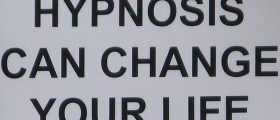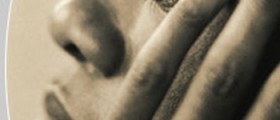
Most hypnotists require the hypnotized to have his or her eyes wide shut before hypnosis may engage. And this would have been all fine and well, and perfectly understandable for after all... in order to do things that are against our very own will, it is previously required that we be physically unaware of the instructions – thus the closing of the eyes –, weren't it for Milton Erickson.
Milton Erickson was the world's most famous hypnotist, and he was the only one of his kind who put people in hypnotic trances with their eyes open.
This is not so much a curious fact when one thinks of it. There are many examples of this that can be found in everyday life. Adverts, real estate salesmen and many of the like all use these techniques (in a way) to bypass the conscious mind and reach for the subconscious. After all, how would they get someone who is uncertain of buying a particular item, to actually do it and thinking he or she wants it himself? A kind of trance, but of course – because after all, trance has no feeling.
So by definition, trance is the state of mind where the analytical part of a person's mind stops questioning the reasons to certain actions, and allows for the subconscious to take the wheel for a while, which may result in drastic behavioral changes.
“The Art of Suggestion”
One of the easiest examples of “the art of suggestion” would be the attempt to make one hundred people look up towards the sky as they exit a building. Presumably the attempt of stopping each and single person and asking him or her to “look up” would end in tears, for the person would presumably question the others' motives and refuse to obey for fear of, for example, losing his or her wallet. There is, however an easier way. And that would be to stand in front of the building whilst constantly looking up. This would, on the other hand, tickle the curiosity of most of the random bypassers and they would – completely by themselves – very likely look up. And that is what the art of suggestion as well as trance is all about.
Another fine example of “visual suggestion” would be the one when a person on a bus (on which smoking was prohibited) decided that it was totally ok to light a cigarette despite the prohibition. This resulted in a chain of people feeling the same way and silently obeying their nicotine craving.
Why do they Close their Eyes Then?
Given the above examples it is really a curious thing that a hypnotist should require for his or her subject to have the eyes closed, since visual suggestion, clearly, only makes things easier. And there is actually a good reason behind this, namely:
The persons is required to close his or her eyes because it puts the subject into a relaxed state. This consequentially makes the subject more vulnerable to suggestion.
Also, another reason would be to ward the subject from the effects of the outside world (such as lights, sounds, etc.) which may only hinder the process of suggestion.
In the end, and conclusively, it is important to remember that trance and hypnosis utilize the fact that they have no real sensory manifestations. The only real way of protecting oneself from their reach is not allowing the conscious mind to lose control over events, that is practice thinking of every decision a person makes.

















Your thoughts on this
Loading...